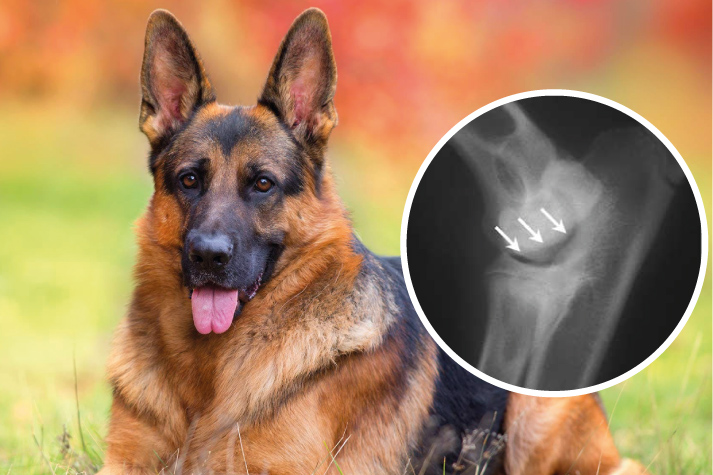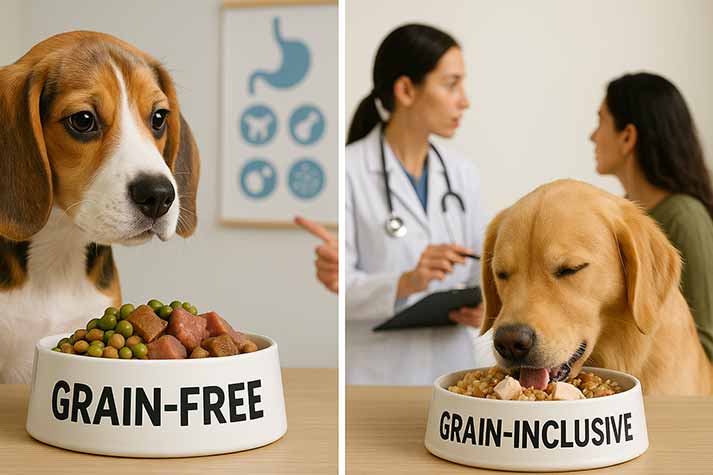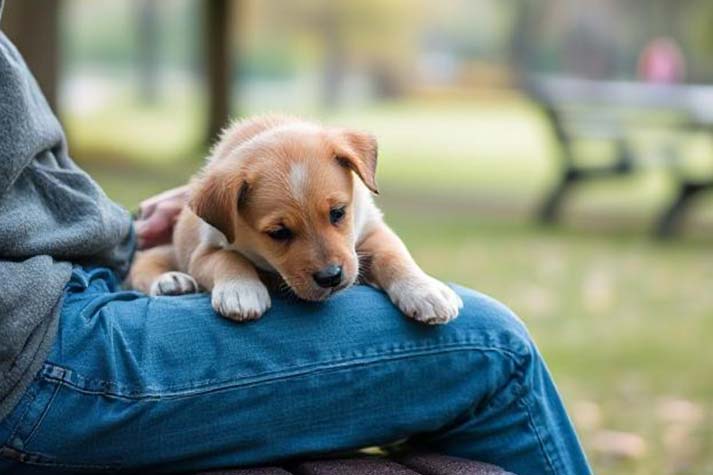
31 Oct
What is dyschondroplasia in dogs?
Every pet parent dreams of their pet having a healthy and happy life.
Unfortunately, unforeseen circumstances and issues can prevent themselves, which
is why it is important to be informed & prepared. Dyschondroplasia is a
joint disorder, which commonly affects the elbow and shoulder joints in dogs.
Usually observed in giant or larger dog breeds, this condition has multiple
causes, the root believed to be the faster rate of growth experienced by larger
dog breeds. Dyschondroplasia is a condition which affects the bones and cartilage of a puppy.
In this condition, newly-developing cartilage fails to turn into bone and bone
tissue properly, leading to cartilage retention which can subsequently cause
articular collapse. Due to an unnatural development of cartilage, a
cartilaginous flap can develop and break, leading to pain and lameness if it
lodges itself in between the joints. Dyschondroplasia is not an instant ailment;
it is a condition which gradually affects a dog’s joints. Commonly observable symptoms of dyschondroplasia include the following: Dyschondroplasia typically has four forms: This condition is caused due to the improper ossification of developing
cartilage, which may be caused due to numerous reasons. A few of these are as
follows: If your dog ever exhibits one or more symptoms of dyschondroplasia, immediately
consult your veterinarian. A vet can conduct a thorough examination of your pup,
inspecting the movement of the afflicted joint and pinpointing the issue. Once
the basic extension, flexibility, and posture of your pet are evaluated, your
vet will then inspect the muscle and joint and check for swelling. Depending on the severity of the condition, your vet will recommend getting an
x-rat and CT scan done, to inspect the damaged area and evaluate its severity.
Both legs may be inspected, as dyschondroplasia can be less severe but still
present, if one side is already demonstrating lameness. Unfortunately, treating dyschondroplasia requires surgery. A surgical procedure
for the treatment of it usually involves removing the pieces of cartilage which
have become lodged within the joint and are causing your pup distress. An
alternative procedure involves modifying the elbow joint and adjusting its
position, in order to reduce the pressure being put on the bone. The recovery and subsequent rehabilitation period for varies
from pup to pup. As dyschondroplasia affects the elbow and shoulder joints,
their lifestyle will have to adjust accordingly. Make sure to pay careful
attention to your pup’s diet, exercise routine, and their weight, as
overexercising their joints or overfeeding them can cause undue strain on
their still-healing shoulders and elbows. Your vet can prescribe an appropriate exercise routine and diet for your
recovering pup post-surgery. Walks may have to be suspended for the duration of
their recovery for roughly 3-7 weeks, with short, 10-minute long walks possible
once their condition improves. Dogs with a mind affliction have a faster
recovery time, but those with more serious issues in their elbows and shoulders
should go easy on intense physical exertion. Once fully recovered, most dogs can return to their daily routines, with
occasional stiffness to be expected with the progression of time. For a pup with
a history of dyschondroplasia, their diet and exercise should be given extra
attention, during the recovery period itself and beyond it as well. What is
Dyschondroplasia?
Types of Dyschondroplasias
Causes of
Dyschondroplasia
Diagnosing
Dyschondroplasia
Treating
Dyschondroplasia
Recovery and
Rehabilitation






AUTHOR’S BIO
Carry My Pet
Passionate pet enthusiasts and globetrotters, dedicated to easing furry friends' journeys worldwide. Penning tales of compassion at CarryMyPet, where every relocation is a tail-wagging adventure.